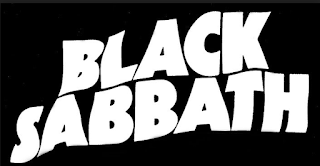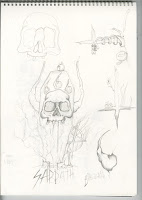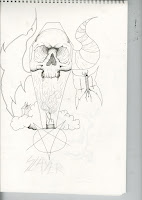Summative Statement
I
have focused my attention for my COP3 to an area that I have never really
understood before but always intrigued me, the use of imagery in heavy metal
counterculture. I have noted that often religious group’s get offended by
images used in counter cultures particularly those that resemble the images
used historically by the Christian Church. Heavy Metal has used these type of images
and therefore been labeled as Satanic since its birth in the 60s/70s.
When
looking into why these images are used a number of things became clear. I found
that historically these religious images were used to provoke a sense of fear
into people in order to show them what will happen if they commit sin. All of
this was done in order to control them, they have been continued to be used
until the present day a few hundred years later however now are used as a
visual with a transgressive meaning.
By
decrypting the reasons and meanings of the semiotic values of the paintings
done in the 16th/17th century’s I have been able to understand
the full meaning behind the images. The paintings that I looked at were done or
commissioned by the church but featured scenes of torture and mutilation and
images that would be seen as very anti-religious and barbaric today.
By
looking at the semiotic meanings that objects hold I have been able to inform
my practice more and better understand why these images are seen as transgressive
by understanding why they are used in heavy metal counterculture, as a way to
kick back against society and give people who do not identify with the general
culture a voice .
This
has given me the confidence to carry on looking at this area of my practice and
I feel better equipped in knowing and understanding the true origins of the
fabricated fear associated to the Heavy Metal counterculture.
I
created artwork for the bands that demonstrated the best used of the transgressive
attitude. This has been done through the use of semiotic value.


















